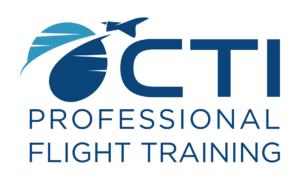How Do Commercial Aircrafts Use Navigation?
Ever wonder how commercial pilots travel thousands of miles so accurately? We’re going to take a look at how commercial aircraft successfully navigate vast distances seamlessly. Commercial aircraft use a number of navigation systems to help guide the aircraft. The systems vary in accuracy, with GPS being the most accurate. But there are a number of other systems that come into play and assist.
Commercial Aircraft Navigation Systems
- Global Positioning System (GPS)
- Inertial Reference Systems (IRS)
- Radio Aids (VORs, DMEs, ADFs, ILSs)
When a flight starts, pilots load a predetermined route into a Flight Management System or Computer (FMS/FMC). The route will show up onto a moving map which the pilots can monitor on their screens during the flight. The screens also show the pilots other things, like airports, other aircraft, high terrain, and bad weather.
GPS – Global Positioning System
GPS is the primary navigation source for commercial airline pilots. It’s also the most accurate and allows aircraft to perform maneuvers down to an accuracy of 0.1 Nautical Miles. However, because of its reliability, GPS can only be used for primary navigation during certain segments of the flight. There are GPS black spots where there may not be enough satellites in range to obtain position. If the GPS system/satellites were to go offline, the aircraft would be in trouble if it only relied on GPS.
IRS – Inertial Reference System
The IRS is a self-contained system that is able to track the aircraft position with no external reference. It uses accelerometers and gyroscopes to calculate any movement and acceleration of the aircraft across its three axis. By telling the system where the aircraft is at the start of the flight using Latitude and Longitude the system has all the information it needs to perform without external support. It isn’t as accurate as GPS, but it does allow the aircraft with decent accuracy should GPS fail.
Radio Aids
Radio beacons, located on land, send out radio beams which tell pilots the aircraft’s range and direction from the radio aid. This allows the aircraft’s computer system to calculate the aircraft’s location. The more radio signals detected, the more accurate the estimated position.
Ready to Start a Career as a Commercial Pilot?
There is no better time than now to start a career in aviation. The market and the economy is always changing, and for young aspiring aviators, today is a golden opportunity to begin a stable and rewarding career as a pilot.
Come visit our Florida campus or Tennessee campus. You can request a tour and see all that CTI has to offer our students. We can’t wait to see you!
